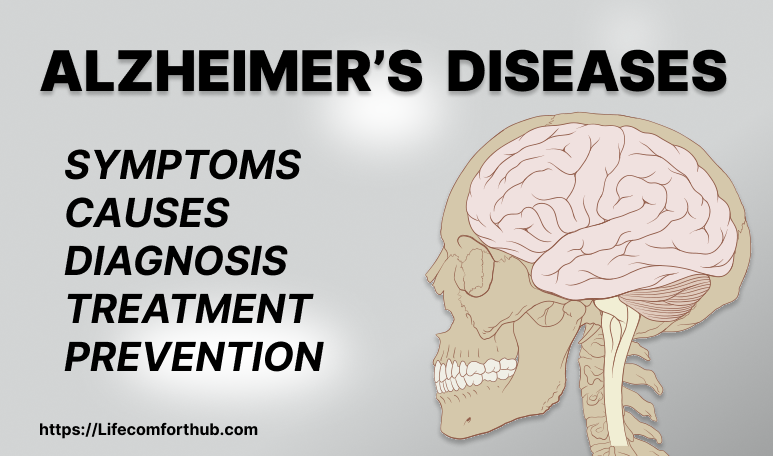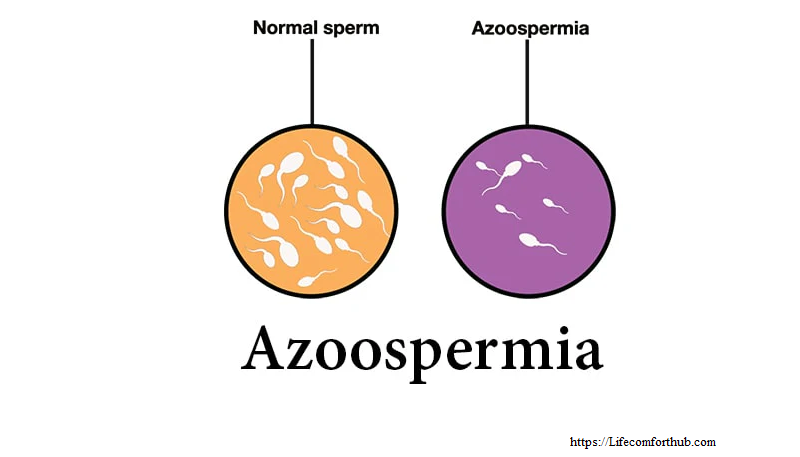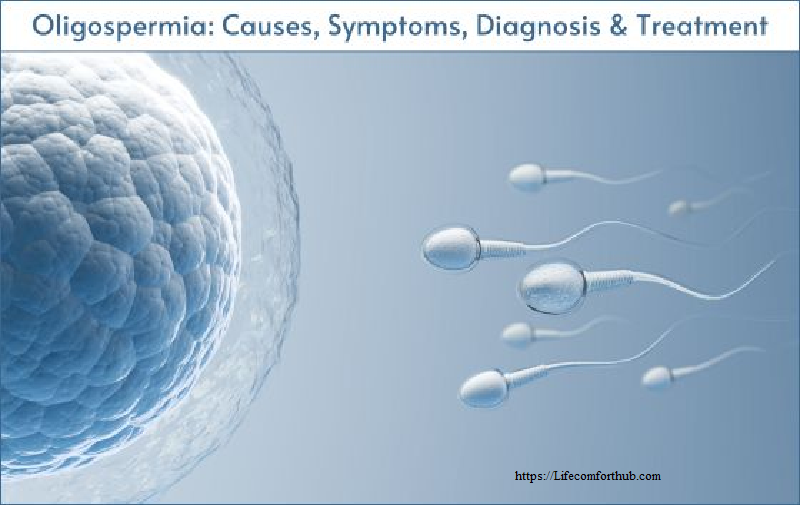Overview
Alzheimer’s Disease is the most common cause of dementia worldwide. It progressively damages the brain, leading to memory loss, cognitive decline, and ultimately, the inability to perform everyday activities. Although there is no cure for Alzheimer’s Disease yet, treatment can help manage symptoms and improve quality of life.
Contents
Introduction to Alzheimer’s disease | Symptoms of Alzheimer’s disease | Causes of Alzheimer’s disease | Diagnosis of Alzheimer’s disease | Treatment of Alzheimer’s disease | Prevention of Alzheimer’s disease
Introduction to Alzheimer’s Disease
Alzheimer’s Disease (AD) is a progressive neurological disorder that destroys memory and other important mental functions. Over time, it impacts a person’s ability to perform everyday activities. It is the most common cause of dementia, a general term for memory loss and cognitive reduction.
Unlike normal aging, Alzheimer’s disease causes serious and irreversible damage to brain cells. This damage typically starts in the hippocampus, the brain region responsible for memory and learning, and then spreads to other areas. According to the time of this research – Alzheimer’s disease affects approximately 24 million people worldwide. One in 10 people older than 65 have it. Nearly 1 in 3 people older than 85 have AD.
AD get worse overtime. It is a progressive disease, and Dementia signs gradually increase and become worst over a number of years. In its early stages, memory loss is mild, but with late-stage Alzheimer’s, individuals lose the ability to carry on a conversation and respond to their environment. A normal person living with AD stay four to eight years after diagnosis but can live more, like up to 20 years, depending on some factors.
Difference Between Dementia and Alzheimer’s Disease
They may sound the same but they are very different.
Dementia is an umbrella term for a group of symptoms involving an ongoing decline in brain function, affecting memory and thinking skills.
Alzheimer’s disease is the most common cause of dementia. It’s a specific progressive brain disease characterized by the buildup of proteins called amyloid plaques and neurofibrillary tangles, leading to neuron damage.
Stages of Alzheimer’s Disease
Alzheimer’s disease generally progresses through several stages, commonly simplified into three main phases:
-
Early Stage (Mild): Individuals experience subtle difficulties that may not be immediately obvious. This often includes trouble remembering recent events or names, difficulty with problem-solving or planning, misplacing valuable objects, and mild confusion regarding time or place. While they might still function independently in many ways, these symptoms begin to interfere with daily life.
-
Middle Stage (Moderate): Memory loss and confusion become more pronounced. People may forget personal history details, struggle to recognize friends or family, have difficulty with language (finding the right words), and face challenges with multi-step tasks like getting dressed. Significant personality and behavioral changes, such as increased agitation, suspicion, or wandering, can emerge. More substantial assistance with daily care becomes necessary. This is often the longest stage.
-
Late Stage (Severe): In the final stage, cognitive abilities decline severely. Individuals lose the capacity to respond to their surroundings, carry on conversations, and eventually, control movement. They become completely dependent on others for all aspects of care, including feeding, bathing, and toileting. Physical health deteriorates, often leading to difficulties with swallowing and walking.
It’s important to remember that the progression rate and specific symptoms vary significantly from person to person.
Symptoms of Alzheimer’s Disease
Alzheimer’s symptoms vary but generally involve a decline in cognitive abilities and daily functioning.
Memory loss is the core symptom of Alzheimer’s disease. Early on, people may struggle to remember recent events or conversations. As the disease progresses, memory problems worsen, and other cognitive and behavioral symptoms appear.
In the beginning, a person might recognize they are having trouble. Over time, it’s often friends or family who first notice the changes.
Brain changes linked to Alzheimer’s cause a wide range of symptoms that gradually get worse.
Memory
While everyone forgets things sometimes, the memory loss from Alzheimer’s is persistent and worsens over time, eventually affecting the ability to live and work independently.
People with Alzheimer’s disease may:
-
Repeat questions and statements often.
-
Forget conversations, appointments, or events.
-
Misplace items in strange locations.
-
Get lost in familiar places.
-
Forget the names of loved ones or common objects.
-
Struggle to find the right words or follow conversations.
Thinking and Reasoning
Alzheimer’s makes it hard to concentrate, especially on abstract concepts like numbers. People may:
-
Have trouble managing finances, balancing checkbooks, or paying bills.
-
Find it difficult to plan or organize tasks.
-
Struggle to do more than one thing at a time.
-
Eventually lose the ability to recognize numbers or handle everyday calculations.
Judgment and Decision-Making
The disease impairs the ability to make sound judgments and decisions. This can lead to:
-
Poor social choices.
-
Dressing inappropriately for the weather.
-
Difficulty reacting to everyday problems, such as food burning on the stove or driving safely.
Planning and Performing Familiar Tasks
Routine activities that require step-by-step actions become hard to manage. Over time, people may:
-
Struggle to prepare meals or follow recipes.
-
Find it difficult to play familiar games.
-
Eventually forget how to perform basic self-care tasks like dressing and bathing.
Language
Alzheimer’s can make speaking, understanding, and reading language challenging. Symptoms can include:
-
Speaking less than usual.
-
Using the wrong words.
-
Mixing languages if bilingual.
-
Reverting to a first language learned in childhood.
Behavior and Personality Changes
The brain changes associated with Alzheimer’s disease can cause shifts in mood and behavior. Affected individuals may:
-
Become withdrawn from activities they used to enjoy.
-
Experience depression or social withdrawal.
-
Show mood swings or aggression.
-
Lose trust in familiar people.
-
Experience paranoia or hallucinations.
-
Develop changes in sleep patterns.
-
Wander or get lost.
-
Show reduced inhibitions.
-
Hold delusional beliefs, like thinking their belongings have been stolen.
Spatial Awareness and Physical Coordination
Alzheimer’s affects spatial understanding and coordination, leading to:
-
Bumping into furniture.
-
Struggling with tasks requiring fine motor skills, such as tying shoes or typing.
-
Difficulty judging distances and understanding how objects relate to their body.
Preserved Skills
Despite the progression of symptoms, some skills often remain intact for a longer time. These preserved abilities may include:
-
Reading or listening to stories.
-
Singing, dancing, or listening to music.
-
Telling stories and sharing old memories.
-
Drawing or doing crafts.
These skills persist because they are controlled by parts of the brain affected later in the disease process.
Causes of Alzheimer’s Disease
What Causes AD?
Alzheimer’s disease is caused by abnormal protein build-up in the brain, specifically two proteins called amyloid and tau.
Your brain contains billions of nerve cells, known as neurons, which allow you to think, remember, learn, and plan. In Alzheimer’s disease:
-
Amyloid proteins clump together between neurons, forming plaques.
-
Tau proteins twist into fibers inside neurons, forming tangles.
These plaques and tangles disrupt the ability of neurons to communicate by blocking the electrical and chemical signals they normally send. Over time, the build-up of amyloid and tau proteins causes neurons to die, leading to permanent brain damage.
Neuron death usually begins in the hippocampus, the part of the brain responsible for memory, and then spreads to other regions. This slow breakdown of brain cells eventually leads to the symptoms of Alzheimer’s disease.
Researchers believe that the harmful changes in the brain can start up to a decade before noticeable symptoms appear. The exact cause of why amyloid and tau accumulate is still being studied.
Is Alzheimer’s Disease Hereditary?
Alzheimer’s disease can have a genetic link. If a biological parent or sibling has Alzheimer’s, your risk of developing the disease increases by 10% to 30%. Having two or more biological siblings with Alzheimer’s makes your risk about three times higher than average.
One key genetic factor is the APOE ε4 gene. Carrying this gene increases the likelihood of developing Alzheimer’s and is associated with an earlier age of onset. However, not everyone with the APOE ε4 gene will develop the disease, it simply raises the risk.
Scientists have also identified other genes that may contribute to a higher risk, but genetics is just one piece of the puzzle. Most cases of Alzheimer’s involve a combination of genetic, environmental, and lifestyle factors.
Diagnosis for Alzheimer’s Disease
Diagnosing AD involves several steps. There’s no single test that can confirm the disease, so healthcare providers use a combination of evaluations.
The process usually starts with a detailed discussion about your symptoms, medical history, and overall health. Your provider will talk with both you and your loved ones to get a full picture. They may ask about:
-
Your ability to handle daily activities
-
Changes in mood, behavior, or personality
-
Current medications
-
Personal and family medical history
-
Any known risk factors for Alzheimer’s disease
A complete physical and neurological exam will follow. These exams help rule out other conditions that might cause similar memory or cognitive issues.
Several tests are typically used during the diagnostic process, including:
-
Cognitive tests to assess memory, problem-solving, and thinking abilities
-
Blood tests to check for other medical conditions
-
Urine tests to rule out infections or metabolic problems
-
Brain imaging tests, such as:
-
MRI scans to look for brain shrinkage or damage
-
CT scans to detect brain structure changes
-
PET scans to identify amyloid plaques and measure brain activity
-
-
Psychiatric and mental health evaluations to screen for depression, anxiety, or other mental health concerns
Early diagnosis is important because it allows you to plan ahead. It gives you time to consider medical treatments, make lifestyle adjustments, and discuss future care options with your healthcare team.
After diagnosis, your doctor will work closely with you and your family to create a treatment plan that fits your needs, focusing on maintaining your quality of life and setting realistic health goals.
Treatment of Alzheimer’s Disease
There is currently no cure for Alzheimer’s disease, and no treatment can reverse the damage to brain cells. However, a range of treatments can help manage symptoms, slow disease progression, and improve quality of life.
Starting treatment early offers the best chance of maintaining brain function and independence for as long as possible.
Medications
Several types of medications are used to treat Alzheimer’s disease:
Cholinesterase Inhibitors
Cholinesterase inhibitors help improve communication between nerve cells by increasing levels of acetylcholine, a brain chemical important for memory and learning. They are often prescribed for mild to moderate stages of Alzheimer’s.
Common cholinesterase inhibitors include:
-
Donepezil (Aricept) – approved for all stages
-
Galantamine (Razadyne) – used for mild to moderate stages
-
Rivastigmine (Exelon) – available in capsule or skin patch form
Side effects may include nausea, vomiting, and loss of appetite, but these often lessen after a few weeks.
NMDA Antagonists
Memantine (Namenda) is an NMDA antagonist used to treat moderate to severe Alzheimer’s disease. It works by regulating the activity of glutamate, a chemical that can harm nerve cells when present in excess. Memantine can be used alone or with a cholinesterase inhibitor.
Common side effects include dizziness, headache, and constipation.
Disease-Modifying Treatments
Newer treatments aim to slow disease progression by targeting amyloid plaques:
-
Lecanemab (Leqembi) – slows progression by clearing amyloid fibers.
-
Donanemab (Kisunla) – targets existing amyloid plaques.
-
Aducanemab (Aduhelm) – still undergoing further testing but shows modest effects.
These medications are given by intravenous (IV) infusion and are not cures. They come with risks and potential side effects, which should be discussed with a healthcare provider.
Symptom Management Medications
Other medications may be used to manage specific symptoms:
-
Antidepressants – for depression, anxiety, or mood swings.
-
Antipsychotics – for aggression, delusions, or hallucinations (used with caution due to serious side effects).
-
Antiseizure medications – sometimes used for mood stabilization.
Medication choices are highly individualized based on symptoms and disease stage.
Non-Medication Therapies
Medicines are just one part of Alzheimer’s care. Other treatments focus on maintaining quality of life:
Cognitive Stimulation Therapy (CST)
Structured group activities and exercises aim to improve memory and problem-solving skills.
Cognitive Rehabilitation
Working with an occupational therapist, people with Alzheimer’s set personal goals like using a phone or cooking simple meals, helping maximize brain function that remains.
Reminiscence and Life Story Work
Involves sharing memories through photos, music, and familiar objects, often boosting mood and emotional wellbeing.
Lifestyle Changes and Safety
Lifestyle strategies that can help include:
-
Maintaining physical activity such as walking or gentle cycling.
-
Eating a balanced diet rich in fruits, vegetables, and healthy fats (e.g., Mediterranean diet).
-
Staying socially and mentally active.
-
Managing other health conditions like diabetes, high blood pressure, and cholesterol.
-
Creating a dementia-friendly home environment (e.g., using labels or clear instructions, removing hazards).
A regular routine, exposure to daylight, and ensuring safe surroundings are important, especially as the disease progresses.
Clinical Trials
Ongoing research continues to explore new treatments. Participating in a clinical trial may provide access to emerging therapies that aren’t widely available yet. Clinical trials are especially valuable in the early stages of the disease.
Your provider can help you find and consider clinical trial opportunities that fit your condition and needs.
Prevention of Alzheimer’s Disease
There’s currently no guaranteed way to prevent Alzheimer’s disease, but healthy lifestyle choices can help lower your risk. Many of the same steps that protect your heart health also seem to protect your brain.
Reducing Your Risk
Although some risk factors like age and genetics can’t be changed, you can take action to improve your overall health and potentially reduce your risk of cognitive decline:
-
Exercise regularly: Aim for at least 150 minutes of moderate-intensity aerobic activity per week, such as brisk walking, cycling, or any activity you enjoy that gets you moving.
-
Eat a healthy, balanced diet: Diets like the Mediterranean or DASH diet, which emphasize fruits, vegetables, whole grains, fish, poultry, nuts, and healthy oils like olive oil, are linked to better brain health. Limit foods high in saturated fats, trans fats, and processed sugars.
-
Manage your health conditions: Work with your healthcare provider to control high blood pressure, diabetes, and high cholesterol, particularly LDL cholesterol. Good management of these conditions helps reduce your risk of dementia.
-
Quit smoking: If you smoke, seek help to stop. Smoking increases your risk of cardiovascular disease, which in turn raises your risk of dementia.
-
Limit alcohol intake: Keep alcohol consumption within recommended guidelines to protect brain and heart health.
-
Treat vision and hearing problems: Addressing untreated vision or hearing loss may lower the risk of cognitive impairment and dementia. Using hearing aids has been linked to a lower risk of dementia in people with hearing loss.
-
Stay mentally active: Engage your brain through reading, doing crossword puzzles, playing board games, learning new skills, or playing musical instruments.
-
Stay socially connected: Regular social engagement through group activities, community events, religious services, book clubs, or volunteering helps maintain cognitive health.
-
Consider genetic counseling: If Alzheimer’s disease runs in your biological family, talk to your provider about genetic testing to understand your risk factors.
Why Lifestyle Matters
If you are wondering why lifestyle matters, research suggests that taking care of your heart can also protect your brain. Studies have shown that lifestyle interventions focusing on diet, exercise, cognitive training, and social activity can slow cognitive decline, especially in people at risk of dementia.
Even though we can’t completely prevent Alzheimer’s, these healthy habits can help preserve cognitive function and improve your quality of life as you age.
Sources
-
Mayo Clinic – Alzheimer’s disease: Symptoms, Causes, Diagnosis, Treatment, and Prevention
-
Alzheimer’s Association – Alzheimer’s and Dementia Resource Center
-
Cleveland Clinic – Alzheimer’s Disease: Symptoms, Diagnosis, and Treatment
-
National Institute on Aging (NIA) – Understanding Alzheimer’s Disease
-
NHS (UK National Health Service) – Alzheimer’s Disease
-
Healthline – Alzheimer’s Disease: Causes, Symptoms, Diagnosis, and Treatments
-
U.S. Food and Drug Administration (FDA) – Approved Alzheimer’s Medications
-
Alzheimer’s Research UK – Causes, Symptoms, and Treatments for Alzheimer’s





